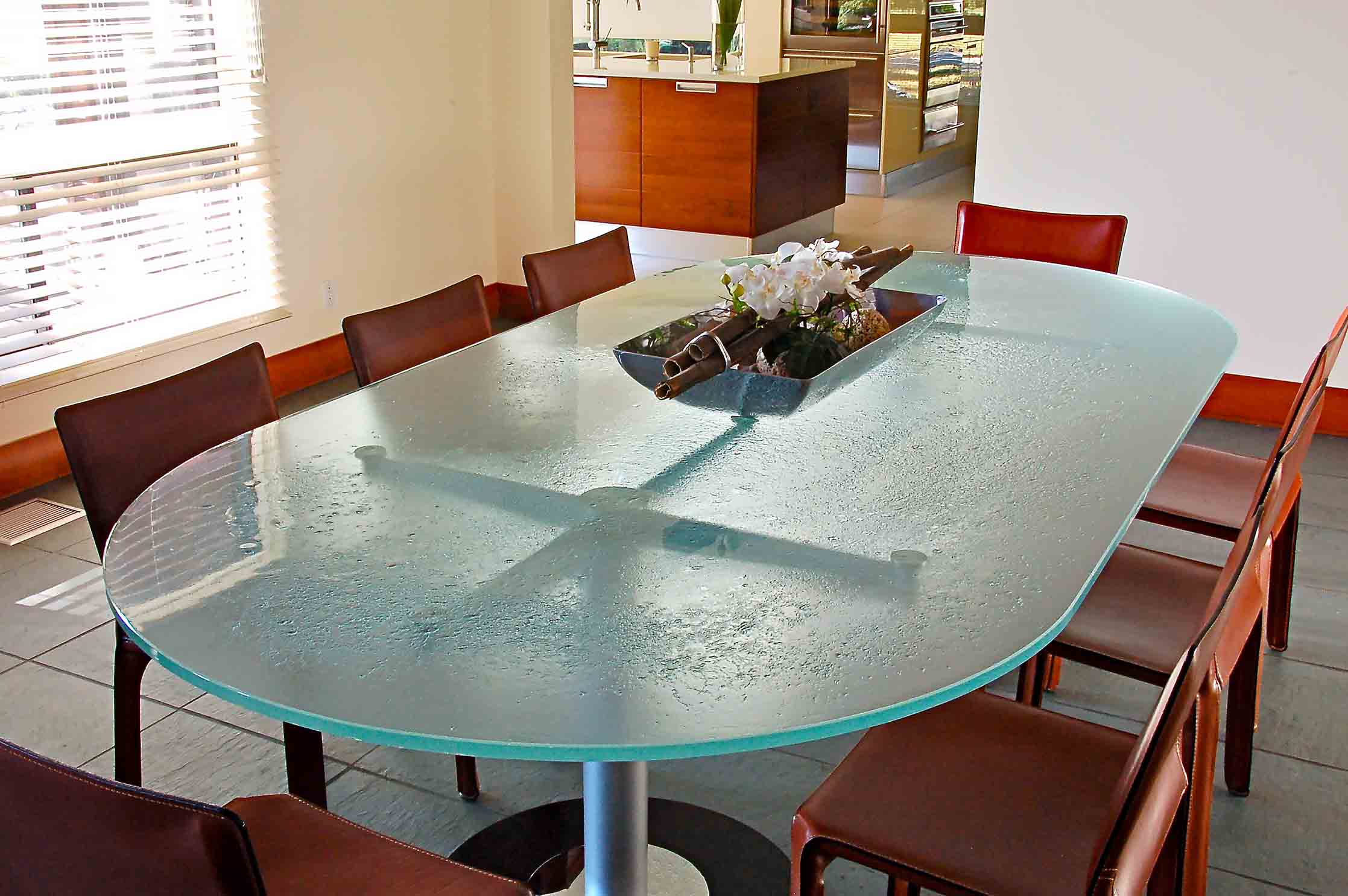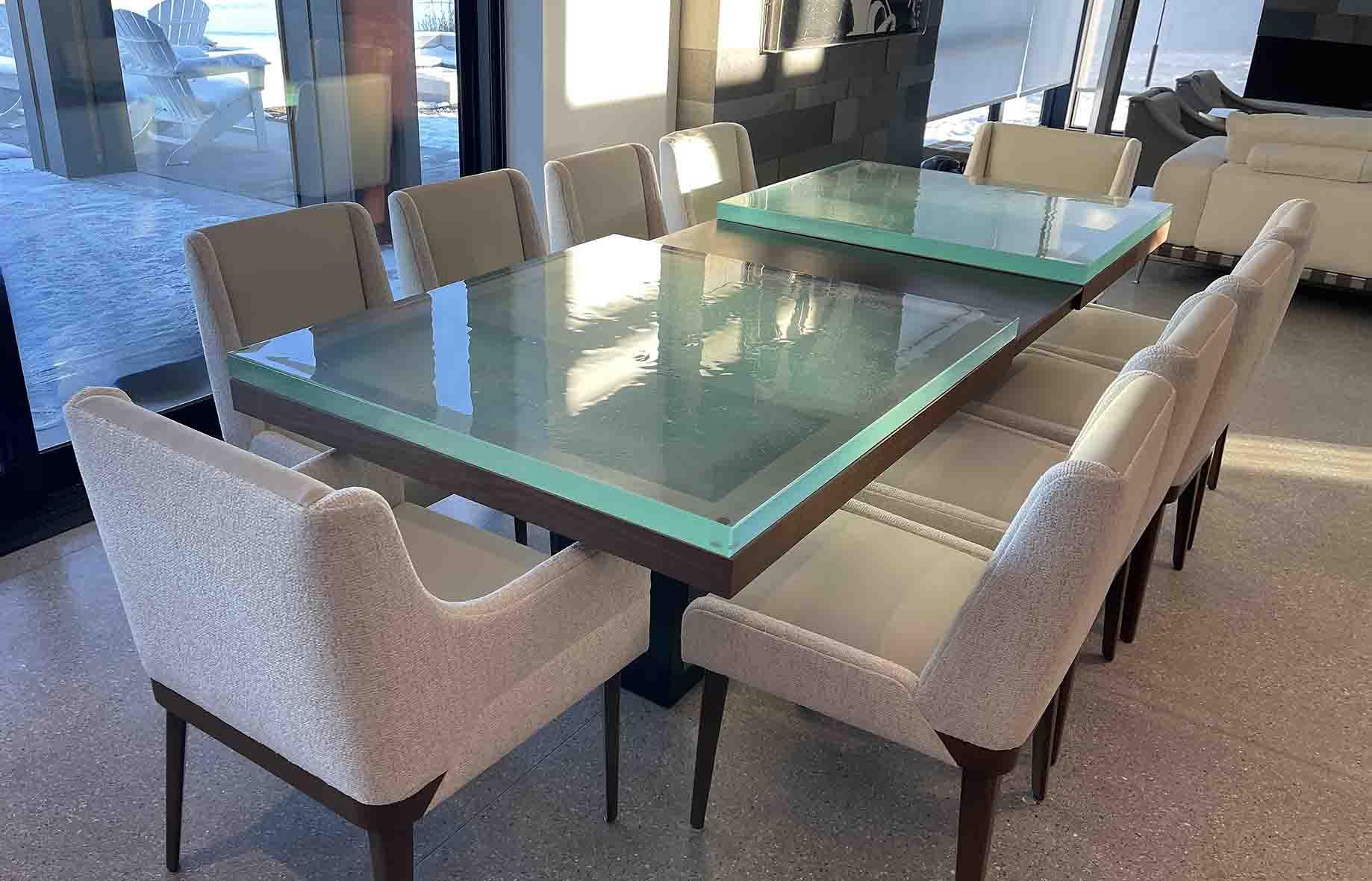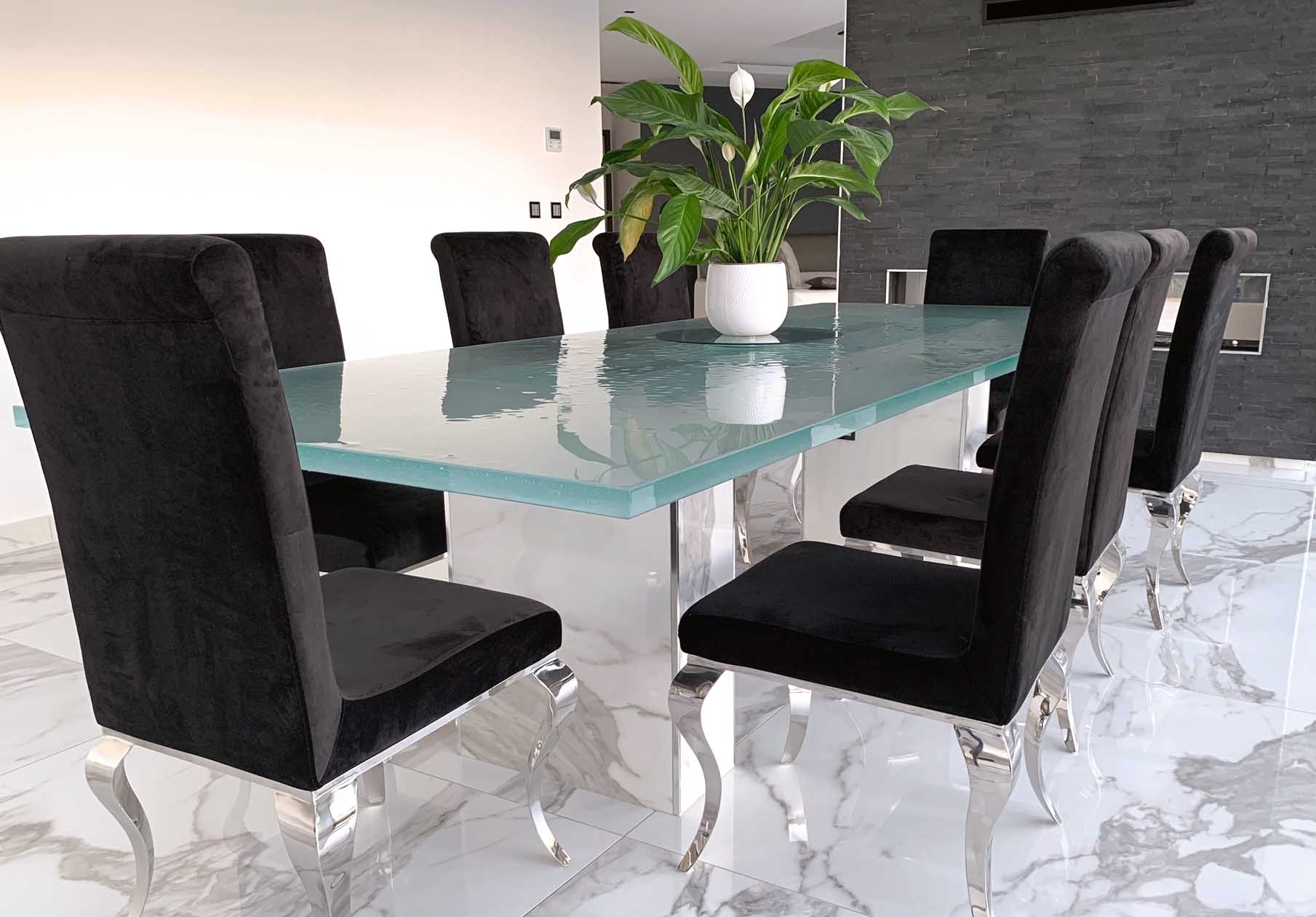Conference tables have always been at the center of professional collaboration, negotiations, and decision-making. In North America, they carry symbolic as well as functional weight: they serve as gathering points for teams, places where companies meet clients, and focal pieces that communicate an organization’s values. Traditionally, these tables were made of heavy woods like oak or walnut, or stone such as marble. But as office culture has evolved-especially in the last two decades-glass has emerged as a material that redefines how we perceive workspaces.
Glass conference tables combine elegance with durability, projecting modernity, openness, and professionalism. They are not only striking in appearance but also resilient, practical, and versatile in design. Whether installed in a high-tech boardroom in Toronto, a creative agency loft in Brooklyn, or a law firm in San Francisco, glass tables provide a unique blend of aesthetics and performance that supports contemporary work environments.
This guide explores in depth why glass conference tables are becoming a go-to choice, what types of glass are used, their durability and performance in office settings, the role of safety standards, design options, advantages and disadvantages, and current market trends in North America. It aims to provide architects, designers, facility managers, and business owners with a detailed understanding of what makes glass conference tables both beautiful and functional.

Why Choose a Glass Conference Table?
The decision to install a glass conference table is rarely just about furniture-it is about shaping an environment that reflects modern values of collaboration, transparency, and innovation. Glass offers qualities that other materials cannot match, and in office contexts these qualities become particularly significant.
First and foremost, glass tables contribute to visual spaciousness. They allow natural light to flow freely, brighten interiors, and make rooms feel larger. This effect is particularly important in North American cities where offices are often compact and maximizing the sense of openness is a design priority.
Equally important is the impression glass tables leave on clients and visitors. A sleek, polished glass surface conveys sophistication, forward-thinking, and professionalism, subtly reinforcing a company’s brand identity. Unlike wood or laminate, glass does not show wear in the same way; properly specified, it retains a “like-new” appearance for years.
Glass tables are also highly hygienic, a feature that has gained importance in the post-pandemic era. Their non-porous surface resists stains and microbial growth, making them easy to clean and sanitize. This is an essential quality for shared office spaces, coworking hubs, and corporate headquarters that see constant use.
Finally, the design flexibility of glass allows for a wide range of customizations. Conference tables can be clear, frosted, tinted, back-painted in corporate colors, or even embedded with LED lighting. Logos, patterns, and branding elements can be applied through etching or digital printing, making the table not just a piece of furniture but an extension of corporate identity.
To summarize the key benefits:
- Modern Aesthetic: Enhances natural light and makes rooms feel open and contemporary.
- Professional Impression: Conveys sophistication and aligns with brand identity.
- Durability: Resistant to scratches and heat, maintains long-term clarity.
- Hygiene: Non-porous, easy to clean, ideal for shared environments.
- Customization: Colors, textures, logos, and lighting options available.
Types of Glass for Conference Tables
There are different kinds of glass. The type of glass used directly affects how strong, elegant, and present a conference table is. Tempered and laminated glass are still widespread, but fused glass is the best in terms of both workmanship and performance. It provides both structural reliability and creative expression for modern North American workplaces.
Fused (Cast) Glass
- Manufacture: Produced by heating multiple layers of glass until they merge into a single thick slab, then cooled slowly in a kiln for maximum structural stability.
- Thickness: Typically ranges from 2" to 4" (50-100 mm).
- Aesthetic: Deeply textured surfaces, organic movement, and sculptural transparency transform the table into a centerpiece. LED lighting can be integrated within the glass for dramatic visual depth.
- Performance: Exceptionally strong, chip-resistant, and stable—ideal for heavy daily use in executive or collaborative spaces. Texture conceals minor wear while maintaining a luminous appearance over time.
- Best Use: Executive boardrooms, luxury offices, and design-forward conference spaces that prioritize both functionality and prestige.
- Advantages: Unmatched durability, artistic customization, handcrafted uniqueness, and the ability to diffuse light beautifully across a room.
- Limitations: Heavier and more expensive than other options, requiring specialized structural support and expert installation.
Laminated Glass
- Composition: Two or more glass sheets bonded with a polymer interlayer (PVB or EVA) that holds the material together if damaged.
- Thickness: Up to 1.5" (38 mm).
- Performance: Provides excellent safety and acoustic insulation for confidential meeting environments.
- Best Use: Corporate spaces prioritizing safety, soundproofing, and compliance with high-traffic regulations.
- Advantages: Enhanced safety and noise reduction, compatible with custom tints or frosted finishes.
- Limitations: Heavier than tempered glass; edges may reveal layering if not meticulously finished.
Tempered Glass
- Process: Heated to over 1200°F and rapidly cooled to create surface compression up to five times stronger than regular glass.
- Thickness: Typically 1/4" to 1/2" (6-12 mm), with larger slabs available for long conference tables.
- Performance: Resistant to thermal stress and everyday impacts; breaks into small blunt fragments for safety.
- Best Use: General-purpose conference rooms where safety and cost-efficiency are priorities.
- Advantages: Affordable, widely available, meets safety standards, and suitable for standard office installations.
- Limitations: Limited customization; lacks the sculptural depth, light diffusion, and tactile richness of fused glass.
Frosted and Back-Painted Glass Finishes
Beyond structure, surface treatments allow additional aesthetic control.
- Frosted Glass: Achieved through acid-etching or sandblasting, creating privacy while maintaining light diffusion.
- Back-Painted Glass: Coated on the underside with durable opaque paint, ideal for branding colors or contemporary matte looks.
These finishes can be applied to tempered, laminated, or fused glass, though fused glass uniquely enhances them by adding texture, depth, and light interaction.

Durability and Performance
One of the most persistent misconceptions about glass furniture is fragility. In truth, well-engineered fused glass is among the most durable materials used in modern interiors. Crafted through kiln-casting and slow annealing, fused glass achieves extraordinary density, mass, and surface hardness. Its substantial thickness often between 2" and 4" and monolithic composition allow it to resist chips, scratches, and thermal shock far beyond the capabilities of standard architectural glass. Even after years of use in corporate or hospitality settings, the textured surface of fused glass naturally conceals small marks, preserving its beauty and integrity.
On the other hand, tempered glass is strong enough for everyday use and can handle moderate impacts and changes in temperature. Laminated glass, on the other hand, makes things safer by keeping cracked panels together through interlayer bonding. Both are still strong and meet code, but neither has the tactile strength and long-term stability of thick fused glass.
Fused glass always fulfills or surpasses ASTM, IBC, and CSA criteria for structural strength, impact resistance, and load-bearing capacity for furniture and architectural uses. Because it is heavy and stable in size, it is perfect for large conference tables that need to be used every day without bending or wearing down.
Edge polishing is just as important for durability. Polished or beveled edges reduce stress points inside the building, and rounded corners make meeting rooms safer and more comfortable for people who use them a lot. A fused glass conference table is not a fragile design statement when it is correctly constructed, supported, and finished. It is a strong structural piece that is made to last for decades.

Design Considerations and Base Pairings
The glass top is only part of a conference table. The choice of base and frame is equally important, both for aesthetics and structural integrity.
- Wood Bases: Provide warmth and contrast to the sleekness of glass. They are common in offices that want to balance tradition with modernity. Dark woods such as walnut or cherry pair elegantly with clear glass.
- Metal Frames: Stainless steel, aluminum, or powder-coated metal offer an industrial, minimalist look. They also provide excellent support for large glass panels.
- Mixed Materials: Combining wood and metal bases with glass tops creates dynamic, contemporary designs.
- Floating Supports: For modern spaces, bases can be designed to be visually minimal, making the glass top appear to float.
Additional design features often include integrated cable management systems, embedded power outlets, and accommodations for audiovisual equipment. Frosted or back-painted glass can help conceal wires while maintaining a clean, professional appearance.
Pros and Cons of Glass Conference Tables
Like any material, glass has its strengths and trade-offs.
Advantages
- Enhances natural light and makes spaces feel larger.
- Provides a modern, professional look that impresses clients.
- Durable, scratch-resistant, and long-lasting when tempered or laminated.
- Easy to clean and sanitize-ideal for shared spaces.
- Customizable with colors, textures, and branding elements.
Disadvantages
- Shows fingerprints and smudges more than wood or laminate, requiring frequent cleaning.
- Can be heavy, especially laminated or cast glass, requiring strong bases and professional installation.
- Higher initial cost compared to standard laminate or MDF conference tables.
- May reflect glare if not frosted or treated, which can be distracting in bright rooms.
Trends in the North American market in 2025
- Glass conference tables are more popular than ever in 2025, especially in big cities in the U.S. and Canada. There are a number of trends that are affecting the market:
- Hybrid Workspaces: As more people work from home, businesses are putting money into offices where people may work together and meet with clients. Part of the investment is in statement conference tables.
- Customization & Branding: Businesses desire tables that show off their brand, with logos carved or painted on the back and colors that fit their firm's color scheme.
- Sustainability: There is more demand for products that can be recycled or reused. A lot of companies now use recycled glass in their tables.
- Technology Integration: More and more conference tables come with built-in charging stations, cable management, and the ability to work with hybrid meeting technologies. You may easily add these features to glass tops.
- Growth in the luxury segment: Cast and fused glass tables are becoming more popular in executive boardrooms, where design is very important.
Maintenance and Care
Maintaining a glass conference table is straightforward but does require regular attention.
- Cleaning: Use standard glass cleaner and a microfiber cloth to remove fingerprints and smudges. Avoid abrasive sponges or cleaners that could scratch the surface.
- Protection: For heavy items such as monitors or projectors, use protective pads to prevent scratches.
- Support Check: Periodically ensure that bases and frames are stable and level to avoid undue stress on the glass.
- Edge Care: Inspect for chips on edges, as these can propagate into cracks over time if ignored.
With proper care, a glass conference table can last decades without losing clarity or functionality.
Comparison Table: Glass Types for Conference Tables
Glass conference tables are now a common sight in North America's most cutting-edge offices because they combine beauty, strength, and usefulness. They show the current work culture's values of openness, transparency, and new ideas in architecture.
Tempered and laminated glass are still useful for everyday usage, but fused glass is the best example of how design and engineering can work together. Fused glass makes a conference table more than just a place to work; it makes it a statement of leadership and identity with its sculptural textures, glowing depth, and strong structure. Each handcrafted slab is a piece of art and a long-term investment that can last for decades of meetings without losing its clarity, integrity, or visual presence.
For architects, designers, and business leaders who are planning the workspaces of 2025 and beyond, fused glass conference tables are more than just furniture. They are signs of new ideas and stability, changing the way people meet, work together, and connect via design that makes people feel safe and creative.

Is a glass conference room table safe for office use?
Yes. ThinkGlass tables use Fused Glass, which is thick, strong, and built for office use. It is more durable and safer than standard glass for everyday meetings.
Will a glass table fit in a large boardroom or heavy-use environment?
Yes. Its thick, durable construction makes it perfect for larger rooms and frequent use without compromising safety or stability.
How much cleaning and upkeep does a glass conference table require?
Fused Glass resists scratches and shows fewer fingerprints than typical glass. A quick wipe keeps the surface clean and polished.




